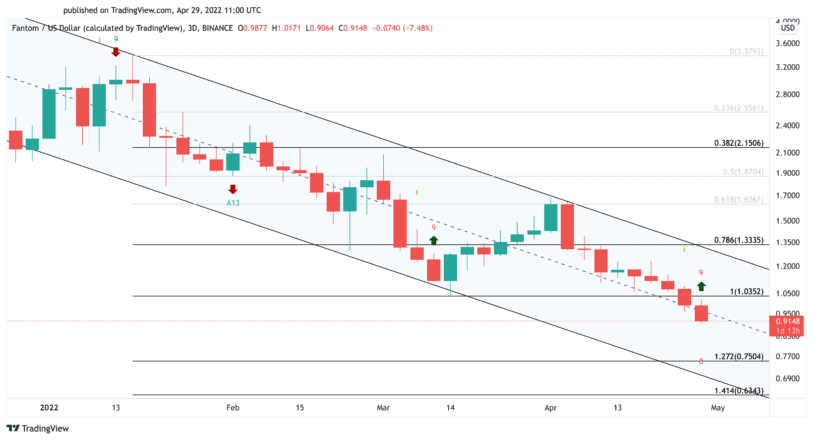Fantom Faces Danger After Losing Critical Support
Fantom looks like it's trading on shaky grounds after losing a vital support area.

Key Takeaways
- Fantom has retraced by more than 46% since Apr. 2.
- It recently lost the $0.96 level as support, which is a bearish sign.
- Another spike in selling pressure could send FTM to $0.63.
Share this article
Fantom looks poised to retrace after slicing through a crucial area of demand. Further selling pressure could see the Layer 1 token drop by more than 30%.
Fantom Dips Below Vital Support
Fantom has breached a critical support level that could lead to a sell-off.
The Layer 1 blockchain’s FTM token continues to trade in a steep downtrend that began on Apr. 2. The asset has since retraced by more than 46%, going from a high of $1.68 to hitting a low of $0.90. The most recent downswing has pushed prices below a significant demand zone, which may encourage traders to exit their long positions.
Fantom appears to have broken through the middle trendline of a parallel channel that developed on its three-day chart. Since early January, FTM has dipped toward the pattern’s lower boundary every time such market behavior has occurred. Similar price action could see the token dive to $0.75 or $0.63 in search of support.

Although the odds appear to favor the bears, the Tom DeMark (TD) Sequential indicator gives traders a reason to remain optimistic that it could see some upside. It is currently presenting a buy signal in the form of a red nine candlestick on Fantom’s three-day chart. The bullish formation anticipates a one to four candlesticks upswing in the near future.
To confirm the bullish thesis, FTM would have to trade above $1 and print a three-day candlestick close above this level. Under such unique circumstances, Fantom could rebound toward the parallel channel’s upper boundary at $1.20.
Disclosure: At the time of writing, the author of this piece owned BTC and ETH.
Share this article
